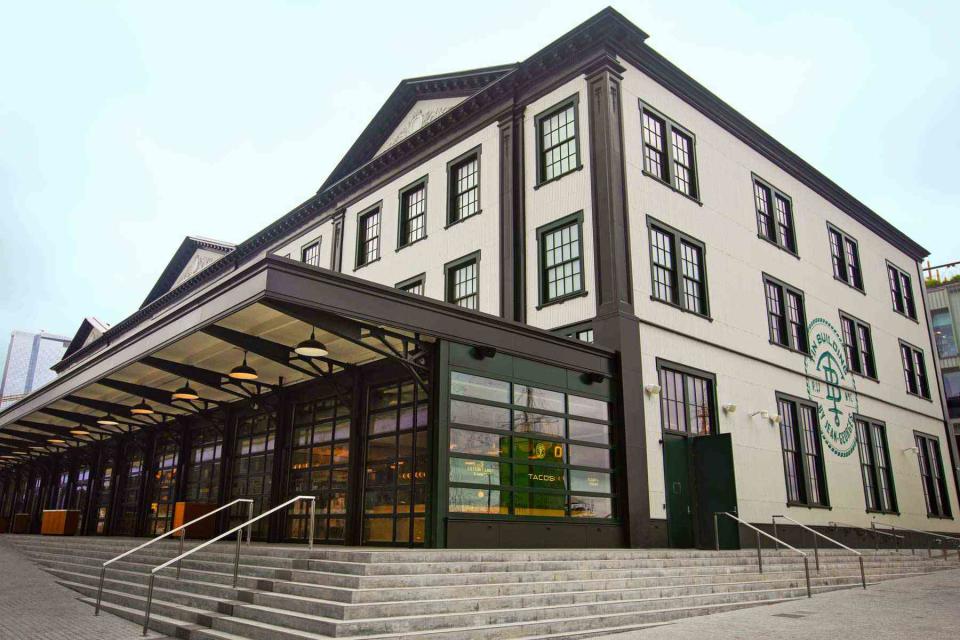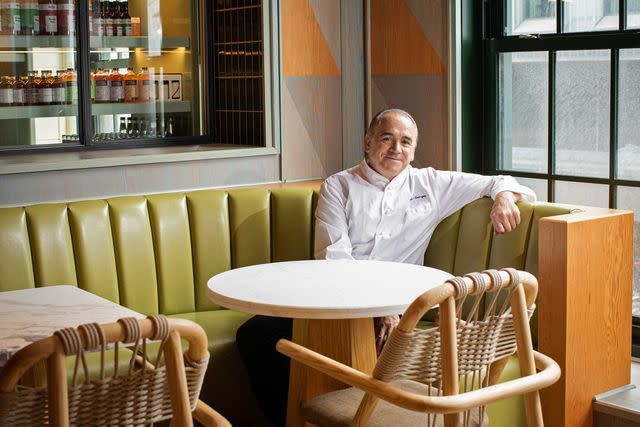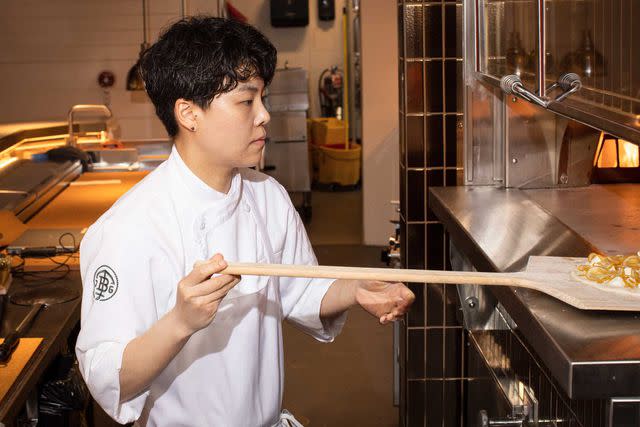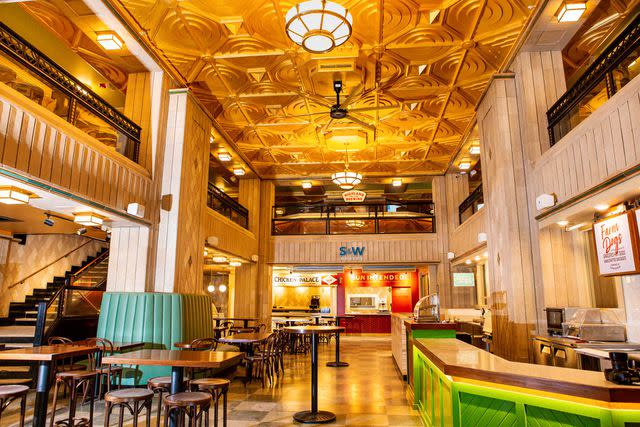This Incredible New York City Food Hall Has 6 Restaurants and 3 Bars Under One, 115-year-old Roof
Chef-led markets are popping up across the U.S. — and beyond. In New York City, where a new culinary hot spot is revitalizing Lower Manhattan, T+L pays a visit to the man behind the plan.

Clay Williams
The latest food hall to arrive in Manhattan is the Tin Building, which occupies a renovated fish market in the Seaport neighborhood.Think about superstar chef Jean-Georges Vongerichten, and his namesake restaurant in Manhattan’s Columbus Circle comes to mind. If you’re lucky enough to have eaten there, you might recall delicate sweet-pea soup; buttery ribbons of yellowfin tuna; crisp white tablecloths and fine china, and flawless service. But just a subway ride away, another, entirely different version of his world has appeared in Lower Manhattan’s revitalized Seaport neighborhood.
The Tin Building by Jean-Georges opened earlier this summer and is set in a 53,000-square-foot structure built in 1907 that was, until 2005, the home of the Fulton Fish Market. Now this massive space contains six restaurants; three bars; three shops, including an Asian food emporium; and a market offering seafood, meats, cheeses, and fresh produce. It was designed by the firm Roman & Williams, whose past commissions have included the British Galleries at the Metropolitan Museum of Art and several Ace Hotels.

Clay Williams
Jean-Georges Vongerichten at Seeds & Weeds restaurant, in the Tin Building.In this project, there’s plenty of personality in venues like the bubblegum-pink confectionery, Spoiled Parrot, and the beachy, laid-back vibe of the plant-based restaurant Seeds & Weeds. In a remarkable feat of engineering, the entire structure (which is wrapped in aluminum) had to be moved from under an elevated highway — a distance of 32 feet — and raised by six feet to comply with current building codes.
Vongerichten wanted to keep a sense not only of the building’s history but also of the spirit of New York City. Upon entering, a neon-lit lobster greets visitors above a sweeping display counter for seafood and other goods, made of veined Statuarietto marble and red oak meant to reflect the past life of the original market. Overhead, windows allow natural light into the space, and an entire wall is covered with images by photographer Barbara Mensch, who documented the Seaport area in the 1980s.

Clay Williams
Baking pizza at Frenchman’s Dough, in the Tin Building.Fans of Vongerichten know that he’s involved in every aspect of his restaurants, from the design to the selection and training of staff. The Tin Building is no exception. The chef spent two and a half years taste-testing every single item sold, down to the individual jars of spices at the shop, Mercantile.
The summer opening of the Tin Building is perhaps the most extravagant example of a worldwide emergence of next-level food halls — many of which are led by well-known chefs and act as vanguards of culinary trends, from celebrating diversity to eco-conscious consumption. In Paris’s fashionable 17th Arrondissement, there’s Hoba, which opened in June as a modern temple to sustainability. The carbon weight of all food served on site is calculated; food is served with reusable cups and trays. The owners work with a local bio-waste service to turn all leftover organic by-products into compost.

From left: Clémence Sahuc; Tim Robison
From left: A falafel bowl from Le Falaf, in Paris’s Hoba food hall; Thai dishes from Bun Intended at the S&W Market, in Asheville, North Carolina.The five chefs-in-residence — including Morocco-born Salim Lahlou, who is behind Bloom’s healthy bowls, and French duo David Banisso and Zac Cohen, who serve house-made English muffin sandwiches à la française — are all committed to creating the most sustainable cuisine possible.

Tim Robison
S&W Market’s main dining hall, which was originally built in 1929.S&W Market debuted in 2021 in Asheville, North Carolina. This collaboration is helmed by five-time James Beard Award nominee Meherwan Irani, the cofounder and executive chef at Chai Pani, which brought Indian street-food-inspired dishes to town. For S&W, he reimagined a 1929 art deco cafeteria into a modern hangout, with outposts of local favorites like Buxton Chicken Palace (known for its addictive fried-chicken sandwiches), Peace Love Tacos, and the Hop, an Asheville ice cream institution since 1978.
“Opening a food market is every chef’s dream,” Vongerichten says of the Tin Building. “I wanted to challenge myself in a way that I haven’t ever before.” For this quiet, often overlooked corner of New York City, it’s a new — and delicious — departure, too.
A version of this story first appeared in the September 2022 issue of Travel + Leisure under the headline “The Food Hall Gets a Face-Lift.”
For more Travel & Leisure news, make sure to sign up for our newsletter!
Read the original article on Travel & Leisure.


